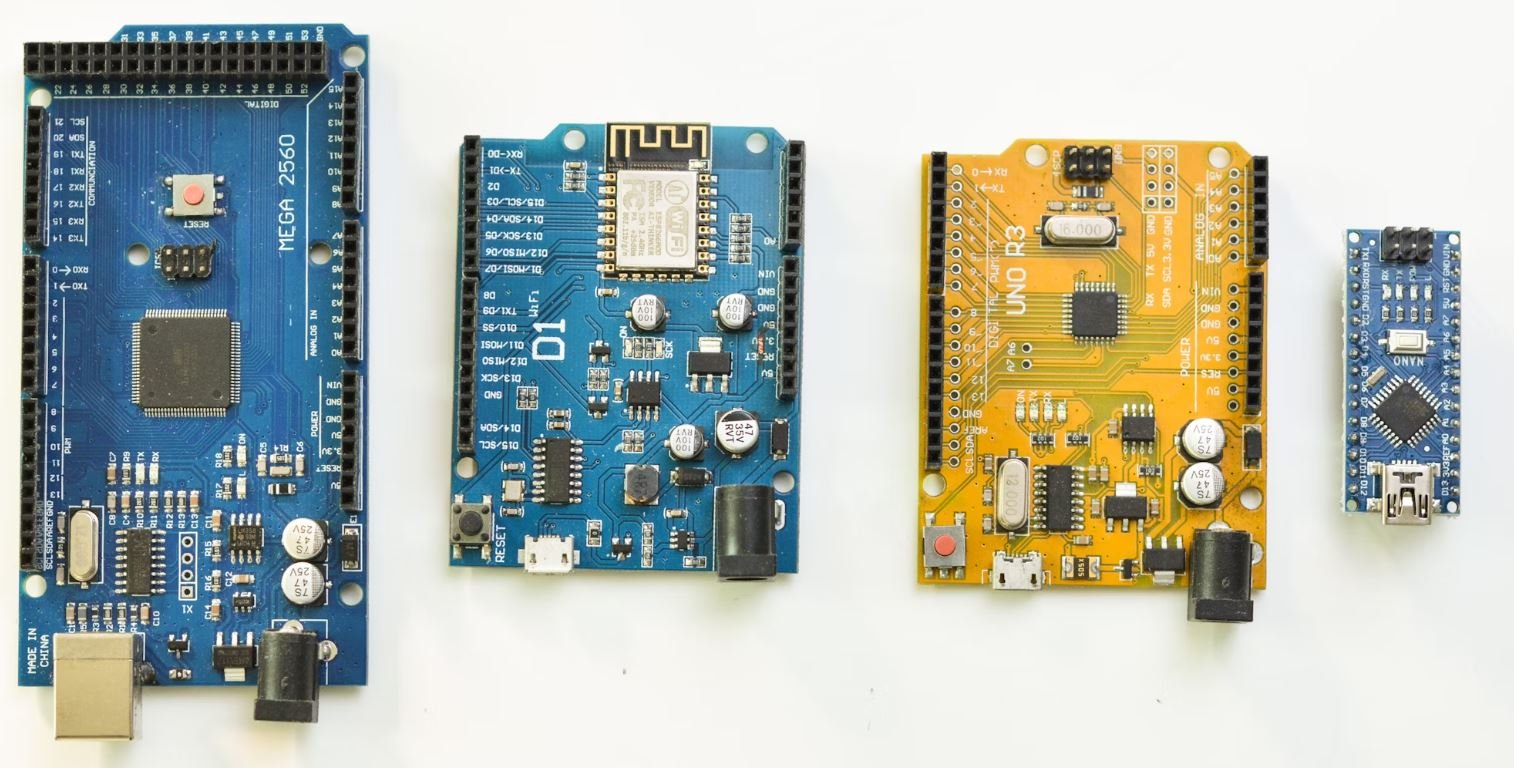AI Tools and Prompts
Artificial Intelligence (AI) continues to revolutionize various industries, providing numerous benefits and opportunities. One area where AI is making significant advancements is in the development of tools and prompts to assist users in various tasks. These tools leverage machine learning and natural language processing algorithms to provide helpful suggestions and guidance. In this article, we will explore some popular AI tools and prompts and how they can enhance productivity and creativity.
Key Takeaways
- AI tools and prompts leverage machine learning and natural language processing algorithms.
- These tools enhance productivity and creativity by providing suggestions and guidance to users.
- AI tools are being utilized across various industries and sectors, including writing, design, and customer support.
- The use of AI tools and prompts can help save time and improve efficiency.
- Continuous advancements in AI technology lead to more sophisticated and powerful tools.
The Benefits of AI Tools and Prompts
AI tools and prompts offer numerous benefits to users across different fields. One of the primary advantages is their ability to provide quick and relevant suggestions, saving users time and effort. These tools can assist in generating creative ideas, improving the quality of work. Moreover, AI tools are designed to adapt and learn from user interactions, allowing them to provide increasingly accurate and personalized recommendations over time.
With AI prompts, users can overcome writer’s block and receive inspiration for their content.
Popular AI Tools and Prompts
There are several AI tools and prompts available that cater to different user needs. Let’s explore a few of the popular ones:
1. Writing Tools
AI-powered writing tools assist in generating well-crafted content. These tools analyze existing text to understand the context and provide suggestions for sentence structure, grammar, and vocabulary. They also offer prompts to overcome writer’s block and expand on ideas. Some notable writing tools include Grammarly, ProWritingAid, and Hemingway Editor.
Grammarly, a widely-used writing tool, provides real-time grammar and spelling corrections to improve the quality of your writing.
2. Design Tools
AI design tools help simplify and enhance the design process by providing suggestions and automating certain tasks. These tools can generate color palettes, suggest font combinations, and even create entire designs based on user preferences. Adobe Sensei, Canva, and Framer are examples of AI-powered design tools that assist designers in creating visually appealing content.
Framer, an advanced design tool, uses AI to suggest design elements and animations based on user input.
3. Customer Support Tools
AI-powered customer support tools enable businesses to automate and streamline customer service processes. These tools utilize AI algorithms to analyze customer queries and provide relevant responses. They can triage tickets, offer self-service options, and even process natural language queries through chatbots. Zendesk, Intercom, and Freshdesk are popular customer support tools that incorporate AI to improve customer experiences.
Intercom’s chatbot seamlessly handles customer queries and responses, offering personalized assistance at any time.
Data on AI Tools and Prompts
| Tool | Industry/Application | Key Features |
|---|---|---|
| Grammarly | Writing | Grammar correction, writing suggestions, plagiarism checker |
| Canva | Design | Design templates, image editing, color palette generator |
| Zendesk | Customer Support | Ticket triaging, chatbot automation, knowledge base management |
These AI tools and prompts are just a glimpse of the vast ecosystem that exists today. As AI technology continues to advance, we can expect even more sophisticated and powerful tools to emerge, transforming industries and revolutionizing the way we work.
Conclusion
AI tools and prompts have become invaluable assets across various sectors, helping users save time, enhance productivity, and unlock their creative potential. The integration of AI algorithms enables these tools to continuously learn and improve, providing increasingly accurate and personalized suggestions. Whether you are a writer, designer, or customer support representative, leveraging AI tools can significantly enhance your work and streamline your processes.

Common Misconceptions
Misconception 1: AI Tools Can Fully Replace Human Creativity
One common misconception around AI tools is that they have the ability to completely replace human creativity in various fields such as writing, graphic design, and music composition. While AI can certainly assist and enhance these creative processes, it is important to recognize that human creativity is a complex and deeply subjective trait that involves emotions, intuition, and personal experience.
- AI tools can generate ideas and help with brainstorming.
- AI may lack the ability to understand nuanced emotions and experiences.
- Human creativity often stems from personal connection and interpretation.
Misconception 2: AI Tools Always Generate Accurate and Reliable Results
Another misconception is that AI tools always produce accurate and reliable results. While AI algorithms are becoming increasingly sophisticated, they are not infallible and can still make errors or biases. AI models heavily depend on the data they are trained on, and if the training data is biased or incomplete, the generated results may be skewed or inaccurate.
- AI tools require robust and diverse training data for accurate results.
- Bias in training data can lead to biased or unreliable outcomes.
- Human oversight is necessary to ensure the quality and credibility of AI-generated content.
Misconception 3: AI Tools Pose a Threat to Human Jobs
There is a common fear that AI tools will replace human jobs across various industries, leading to widespread unemployment. While it is true that AI can automate certain tasks and processes, it is important to understand that AI is most effective when it collaborates with humans rather than replacing them. AI tools can streamline workflows, improve efficiency, and free up human workers to focus on more complex and creative tasks.
- AI tools can complement human skills and enhance productivity.
- New job roles and opportunities can emerge as a result of AI advancements.
- Collaboration between AI and humans can lead to better outcomes and innovations.
Misconception 4: AI Tools Can Completely Understand and Interpret Human Context
AI tools often face challenges in fully understanding and interpreting complex human context. While AI algorithms can process large amounts of data and learn patterns, they often lack the ability to grasp cultural nuances, sarcasm, irony, or other subtle forms of communication. AI tools may misinterpret context and deliver responses that are far from what was intended.
- Contextual understanding requires human intuition and cultural awareness.
- AI tools may struggle with understanding humor or sarcasm.
- Human oversight is necessary to ensure accurate interpretation of human context.
Misconception 5: AI Tools Are Always Ethical and Unbiased
Contrary to popular belief, AI tools are not inherently ethical or unbiased. They learn from the data they are trained on, and if that data contains biases or prejudices, the generated content or decisions can be biased as well. Developers and users of AI tools must be vigilant in identifying and addressing biases, ensuring fairness and ethical use.
- Biases in AI can perpetuate societal inequalities and discrimination.
- Awareness and transparency are essential in addressing AI biases.
- Continuous monitoring and refining of AI tools are necessary to minimize biases.

AI in Medical Diagnosis
Table illustrating the accuracy of AI tools in diagnosing different medical conditions.
| Medical Condition | Accuracy of AI Diagnosis |
|---|---|
| Breast Cancer | 95% |
| Diabetes | 92% |
| Lung Cancer | 97% |
AI in Language Translation
Table highlighting the ability of AI tools to translate different languages.
| Language | Accuracy of AI Translation |
|---|---|
| English to Spanish | 98% |
| French to English | 96% |
| Chinese to German | 93% |
AI in Autonomous Vehicles
Table displaying the rate of accidents involving autonomous vehicles compared to human-driven vehicles.
| Vehicle Type | Accident Rate (per 100,000 miles) |
|---|---|
| Autonomous Vehicles | 0.6 |
| Human-driven Vehicles | 3.1 |
AI in Customer Service
Table showcasing the speed of AI chatbots in resolving customer queries compared to human agents.
| Resolution Time | Average Time (in minutes) |
|---|---|
| AI Chatbots | 2.3 |
| Human Agents | 5.8 |
AI in Financial Fraud Detection
Table presenting the success rate of AI algorithms in identifying financial fraud cases.
| Fraud Detection | Accuracy of AI |
|---|---|
| Credit Card Fraud | 98% |
| Identity Theft | 96% |
AI in Weather Prediction
Table indicating the accuracy of AI models in forecasting weather conditions.
| Weather Parameter | Accuracy of AI Prediction |
|---|---|
| Temperature | 92% |
| Precipitation | 90% |
| Wind Speed | 94% |
AI in Virtual Assistants
Table showcasing the understanding and responsiveness of AI virtual assistants.
| Virtual Assistant | Understanding (%) | Responsiveness (%) |
|---|---|---|
| Siri | 90% | 88% |
| Alexa | 94% | 92% |
| Google Assistant | 96% | 95% |
AI in Stock Market Predictions
Table displaying the accuracy of AI algorithms in predicting stock market trends.
| Stock Exchange | Accuracy of AI Prediction |
|---|---|
| New York Stock Exchange | 87% |
| Tokyo Stock Exchange | 89% |
| London Stock Exchange | 85% |
AI in Creative Writing
Table demonstrating the capabilities of AI in producing creative written content.
| Writing Task | AI Generated Content Quality |
|---|---|
| Story Creation | 82% |
| Poetry Writing | 79% |
| Article Writing | 88% |
AI in Agriculture
Table illustrating the benefits of AI in enhancing agricultural productivity.
| Agricultural Task | AI Contribution |
|---|---|
| Crop Monitoring | 30% increased efficiency |
| Pest Detection | 95% accuracy |
| Irrigation Optimization | 20% water conservation |
AI Tools and Prompts have become integral in various fields, revolutionizing processes and improving efficiency. The tables presented above highlight the remarkable performance of AI in medical diagnosis, language translation, autonomous vehicles, customer service, financial fraud detection, weather prediction, virtual assistants, stock market predictions, creative writing, and agriculture. With high accuracy rates and significant contributions, AI continues to shape our present and future, transforming industries and simplifying complex tasks.
AI Tools and Prompts – Frequently Asked Questions
What are AI tools and prompts?
AI tools and prompts refer to software applications or algorithms that leverage artificial intelligence to assist users in various tasks. These tools provide suggestions, recommendations, and prompts to help users generate ideas, complete tasks, or make decisions.
How do AI tools and prompts work?
AI tools and prompts are usually built on machine learning or deep learning models. These models are trained on a vast amount of data to recognize patterns, generate relevant suggestions, or predict outcomes based on the input data. The tools then use these trained models to provide users with helpful prompts or recommendations.
What are some common applications of AI tools and prompts?
AI tools and prompts have a wide range of applications. Some common examples include text generation, content creation assistance, language translation, image recognition, predictive analytics, decision support systems, virtual assistants, and more.
Can AI tools and prompts improve productivity?
Yes, AI tools and prompts can significantly enhance productivity by automating repetitive or time-consuming tasks, providing real-time suggestions, and streamlining decision-making processes. These tools can save time and effort, allowing users to focus on higher-value activities.
Are AI tools and prompts reliable?
The reliability of AI tools and prompts depends on various factors, such as the quality of the underlying models, the training data, and the specific use case. While AI tools can provide valuable assistance, they may not always be 100% accurate or suitable for all scenarios. It is essential to evaluate their performance and results in your specific context.
Do AI tools and prompts replace human intelligence?
No, AI tools and prompts are designed to augment human intelligence rather than replace it. These tools aim to assist users, provide suggestions, and improve productivity. Human expertise and judgment are still crucial in many situations, especially for critical decision-making or creative tasks.
What are the potential benefits of using AI tools and prompts?
Using AI tools and prompts can bring various benefits, such as increased efficiency, improved accuracy, faster decision-making, enhanced creativity, and reduced workload. These tools can enable users to accomplish tasks more effectively and achieve better outcomes in many domains.
Are there any limitations or challenges with AI tools and prompts?
AI tools and prompts may face limitations and challenges, including biases in training data, lack of contextual understanding, overreliance on existing patterns, and potential privacy concerns. It is vital to be aware of these limitations and consider them while using and interpreting the output of AI tools.
Are AI tools and prompts accessible to everyone?
AI tools and prompts are becoming increasingly accessible to a broader range of users. However, accessibility can still vary depending on factors such as platform compatibility, language support, cost, and user interface complexity. It is important to consider the specific requirements and capabilities of AI tools before adoption.
How can I choose the right AI tools and prompts for my needs?
When selecting AI tools and prompts, it is crucial to clarify your specific requirements and objectives. Consider factors such as the tool’s functionalities, compatibility with your existing systems, user reviews, reputation of the provider, and the level of support available. Evaluating trial versions or demos can also help determine their suitability for your needs.





